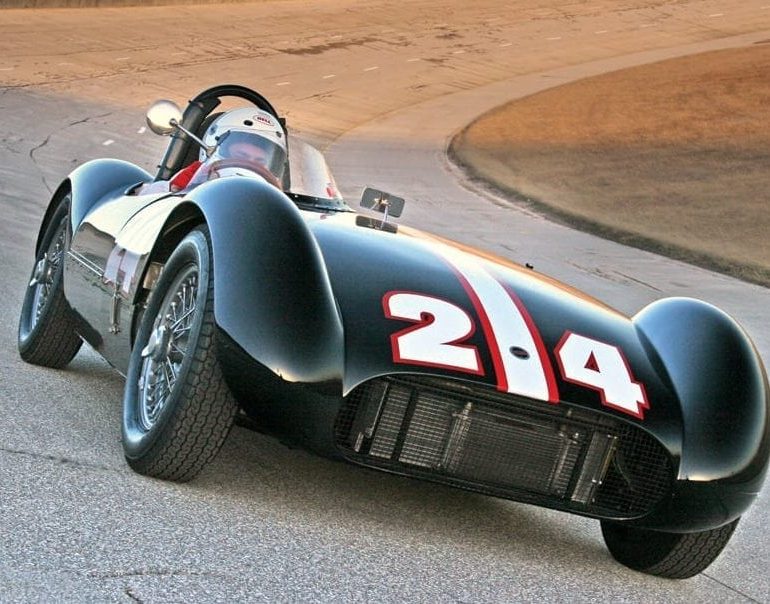1957 Climax-powered Jomar
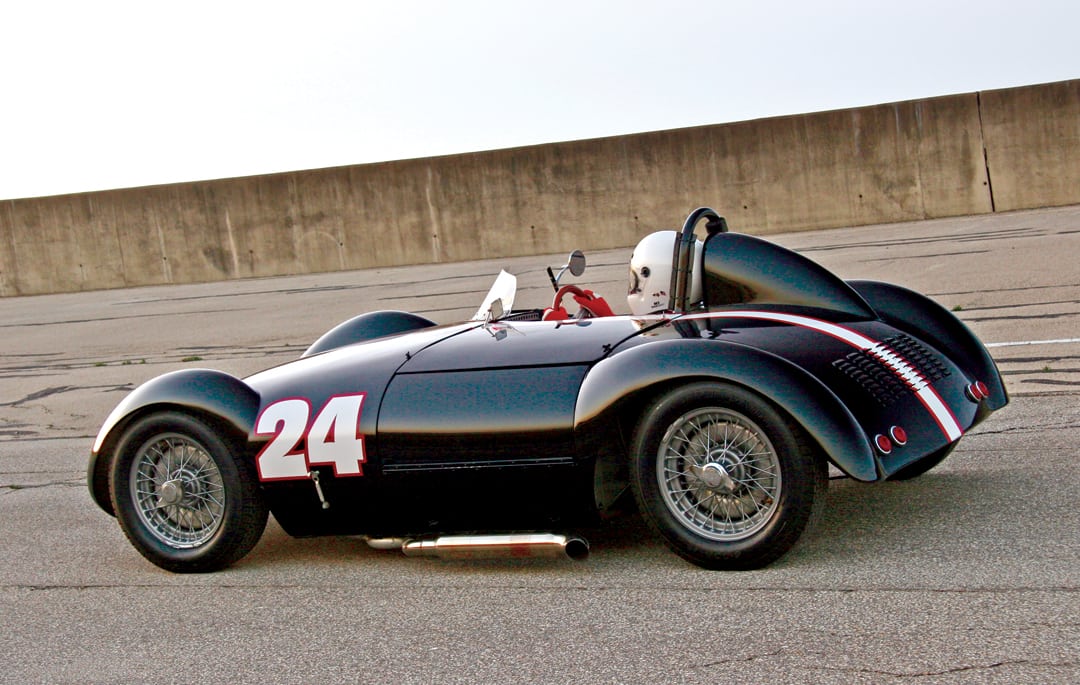
You know the story. Start with a svelte English chassis, add an American V-8, clothe it in a lightweight body and go racing. It worked for Carroll Shelby. It worked for Sydney Allard. Worked for a lot of other folks too, but Ray Saidel went about the whole Anglo-American alliance formula from a completely different perspective, and it worked just fine. His Jomars were a match for most of the Lotus 11s, Elvas and Coopers on the East Coast, and he was one of the few to have successfully supercharged a Coventry Climax engine! Plus, his development program led to the successful line of TVR sports cars in England.
Ray Saidel owned the Merrimack Street Garage in Manchester, New Hampshire, when racing bit him hard. He was making a good living selling Oldsmobiles in the dealership he had inherited from his father, but an HRG caught his eye and, before he knew it, he was caught up in the excitement of sports car racing. The “Hurg” gave way to an Allard J2X Le Mans, which he stuffed with an Olds V-8. “We had the only one with an Olds that I know of,” Saidel recalls. He won the Northeastern Region C-Modified Championship in 1955 before deciding he wanted to build his own car.
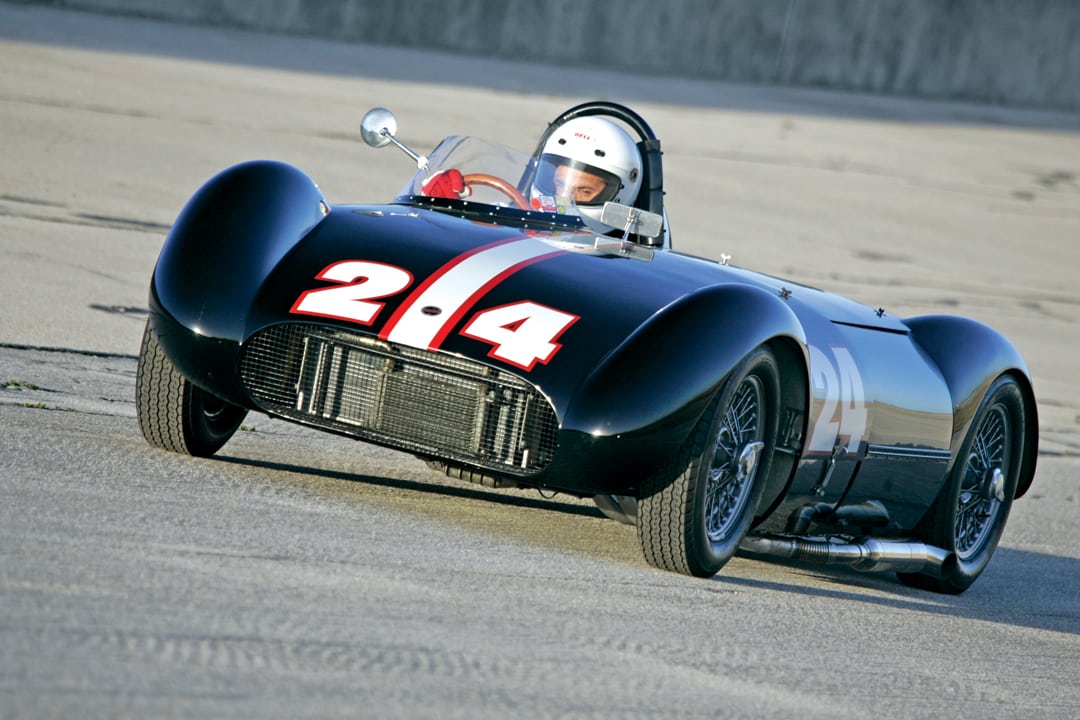
Saidel started with the Jomar name—a contraction of the names of his first two children, daughter Joanna and son Marc. He then placed an order for two chassis that were never designed for road racing. Dellow was an established English manufacturer of trials cars, intended for working their way across muddy riverbeds and up steep hillsides in English Trials competitions. They were trophy-winning, off-road vehicles but ill-suited for smooth track work. “They were too heavy,” recalls Saidel. “The brakes were mechanical and at Beverly, we were always lifting the right wheel.” Nonetheless, Saidel received two Dellow chassis and, aided by Louis Turner and Normal Leeds, fabricated simple aluminum envelope bodywork and powered them with anemic Ford, 1172-cc, side-valve engines. The resulting Jomar Mk.Is were bog slow, virtually unstoppable and handled poorly, but were hell for stout and finished consistently. Saidel had learned some valuable lessons to apply to the Jomar Mk.II.
The Second Time Around
Saidel began searching for a better English chassis to base his next cars on. “I saw an ad in Autosport for TVR Engineering,” says Ray. “It showed a frame, but it wasn’t really a car.” TVR was offering two chassis, one for racing and one for street use. Trevor Wilkinson and Jack Pickard had been building tube-frame chassis with independent suspension systems based on VW trailing-link, front-suspension systems (adapted to both ends) resulting in a low-cost fully independent suspension system. They had been in business since 1949, but had only sold a small number of chassis clothed in various off-the-shelf kit car bodies. “I called TVR and asked them to put a Climax engine in it,” says Saidel. They were thrilled when orders for three racing chassis were received and soon granted Merrimac Street Garage the exclusive U.S. franchise for TVR.
THE MK.II
Saidel started with chassis 7C101, which was powered by a Coventry Climax, FWA, 1100-cc, Stage I engine bolted to an MGA transmission. It had drum brakes and alloy wheels with a wide bolt pattern near the rim. An attractive aluminum racing body was fabricated by the Jomar crew, and the first Jomar Mk.II was ready to race in 1956. As could be expected, it had a number of new-car issues. Welds failed, kingpins broke and braking was still substandard. Much of this was fixed by the time the 7C102 and 7C104 were completed in 1957. They had wire wheels and larger finned, alloy brake drums, which solved the braking problem.
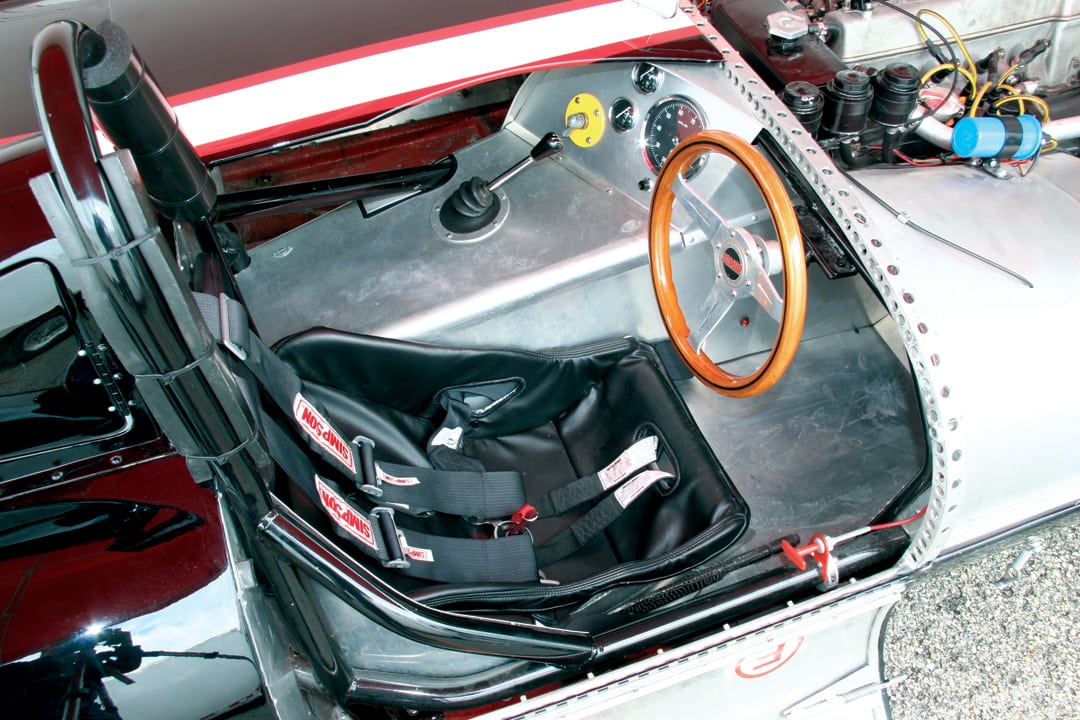
Additionally, more muscular Stage II Climax engines were now used. The Jomars ran in G-Modified, a class for sports-racing cars with engines of under-1,100-cc displacement, normally the domain of Lotus 11s, Elvas and Coopers. Saidel raced 7C101 and sold 7C102 to Bob Columbosian. Saidel finished 2nd in class three times in his first season, but 7C101 was destroyed in 1957 when it was crashed by Ray Heppenstall.
The third Mk.II chassis was 7C104, which was identical to 7C102. It was painted black with a red-and-white stripe and became a “works” car. It ran in over 50 races in 1957 and 1958, and won its class once at Thompson and twice at Lime Rock. Saidel took his new steed to the USAC Pro Series, where he terrorized the big bore cars and finished 13th overall, despite a number of mechanical problems. It was the most successful Jomar of all.
Two more Mk.IIs were built, 7C109 and 7C-S116. The latter was powered by a 1500-cc Climax FWB pumped up by a Shorrock supercharger. “Chris Shorrock built blowers for English Fords, and he told me he could make one for the Climax that would give good power. We tried it, but we had too much compression to make it work. I called a Mobile gas rep, and he found out what kind of fuel they were running in England in Formula One cars and it was 25% methanol, 25% Benzol and 50% gasoline. We mixed our own fuel, and we had all kinds of ‘no smoking’ signs in the shop,” Saidel laughs. “USAC let us run fuel, but we had to run gas in the SCCA.” The larger 1,500-cc engine bumped the new Jomar into F-Modified, and the supercharger bumped it yet again into E-Modified.
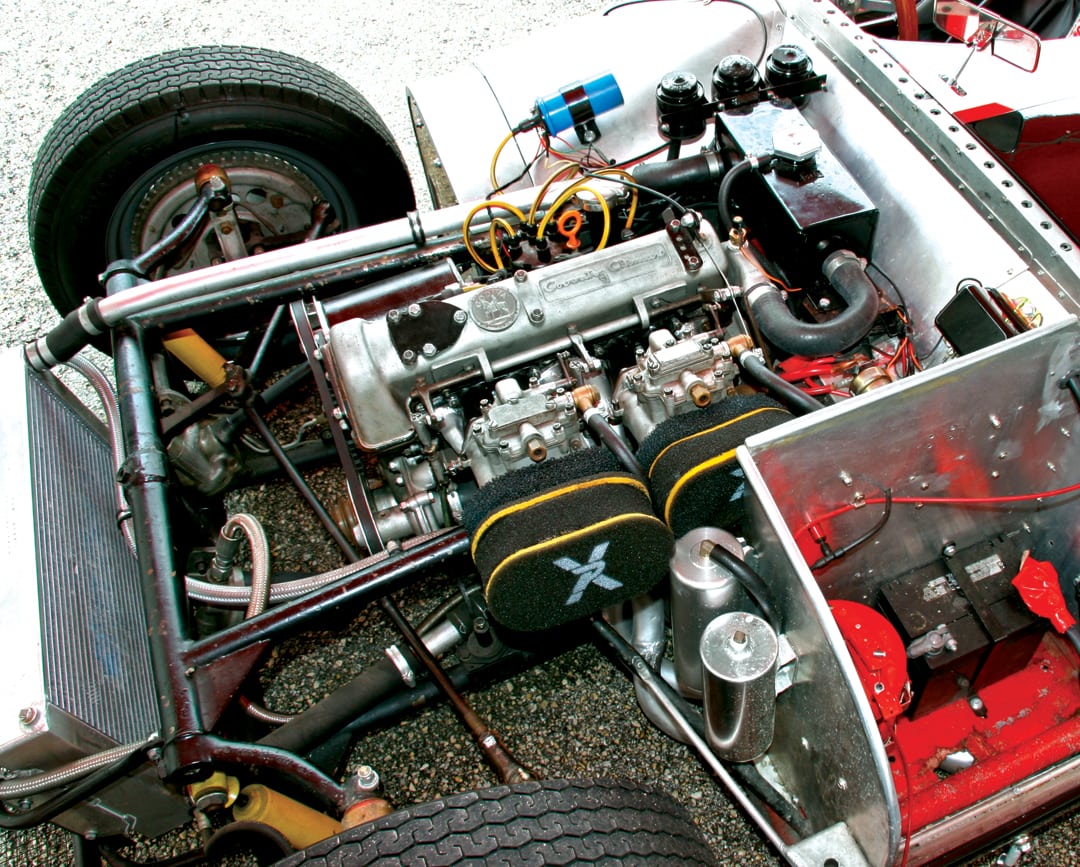
Since the chassis arrived from England without a body and Saidel was short on time to make a race, the body from 7C104 was hastily removed and installed on 7C116. Saidel recalls the blower was a constant source of frustration. “We started out with a British army tank carburetor that Trevor Wilkinson had found for me. The rotary gas valve fell out at Harewood and it started missing at low speed.” Eventually, they got it to work by lowering the compression ratio.
Saidel recalls that the competition in G-Modified was intense. “The Lotuses were always faster. We had to buy our close ratio gear sets from Chapman, and he wasn’t selling us the same sets he sold to the Lotus owners. I went a lot faster when I finally got a set. Frank Baptista had a Lotus 11 factory team car and he could run faster. He had a Stage III engine. When he had the cam cover off, I saw the extra cam bearing supports, so I had some made so we could rev higher.”
Upgrade to MK.III
The Jomar Mk.IIIs were mechanically very similar to the MK.II models although there were detail improvements to the suspension and a revised body shape. An 1,100-cc Climax Stage II FWA engine was used in the first car along with a close-ratio gearbox and Alfin drum brakes. The body was slightly streamlined with less pronounced bumps over the tires. It was sold to the Seaman Bearing Company and campaigned extensively on the West Coast. The second Mk.III had a supercharged, 1,100-cc, Climax FWA engine. In 1959, Saidel drove it in the USAC-sponsored Daytona 1,000 Kilometer Race, where it ran as high as 3rd until a fuel pump broke, then, after repairs, went on to finish 6th. Before selling it in the 1960s, Saidel replaced the Climax with an aluminum Oldsmobile V-8 which worked very well. This chassis is currently missing.
Formule Two Racer
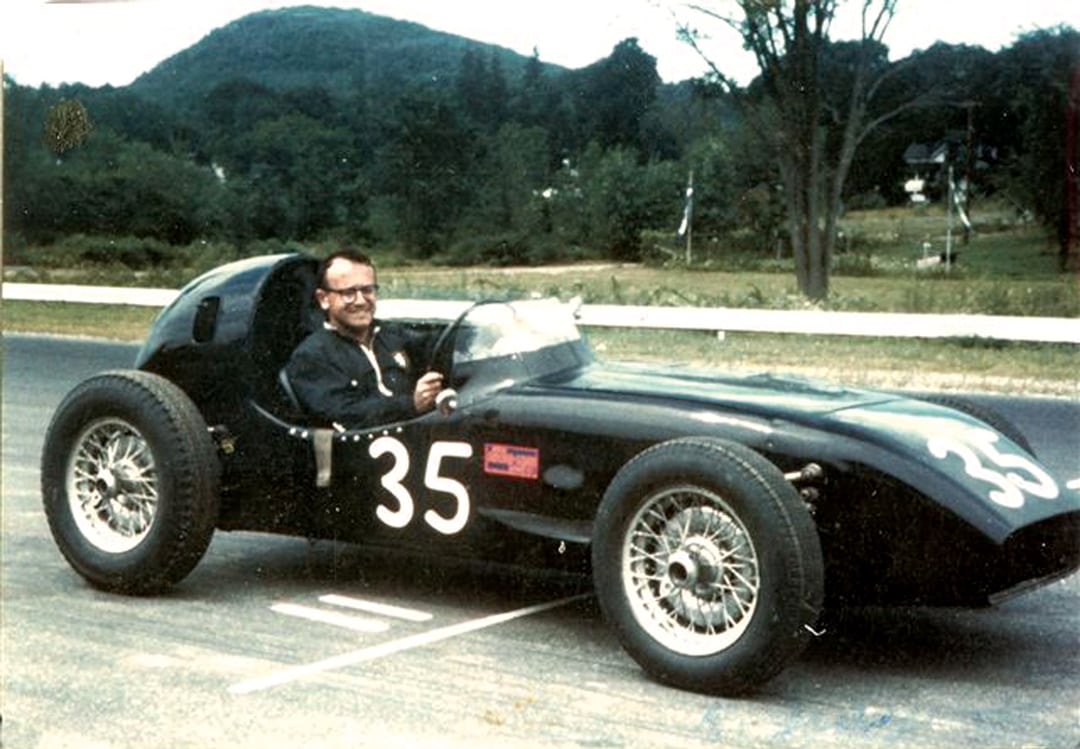
The Jomar SSR-1 was a single-seat F2 car. The suspension was similar to the two-seat racers, but it and the lightweight aluminum body were both made by Saidel. It initially housed a 1,220-cc Climax FWE engine and was later upgraded to a 1,500-cc FWB. In 1959, Saidel drove the SSR-1 to a class win and 2nd overall at Lime Rock, then a 3rd in class at Thompson. The next season, a supercharger was installed and Saidel notched up a class 2nd at Thompson and 3rd at Watkins Glen. “It was my favorite car,” says Saidel. “It felt like an animal. It was more controllable (than the sports-racers) and you could slide it around tight turns. And you could place it visually since you could see the tires.”
Street Racers
TVR was anxious to build street cars, as there was a much better market than for pure racing machinery. The first “street car” delivered to Saidel was a pretty roadster with a fiberglass body and a Coventry Climax FWA engine. Although intended to be a street/race model, the sole TVR roadster delivered to Saidel was badged as a Jomar and raced from new.
The next Jomar-badged TVR was a notchback coupe with a heavier and cheaper version of the TVR chassis. Four were badged as Jomars and fitted with Climax or Ford engines. All were right-hand-drive and not built to a particularly high standard. One was raced as a factory team car and driven by Saidel and Paul Manseau in 1958. Saidel had a hard time selling the notchbacks and requested better styling on future models.
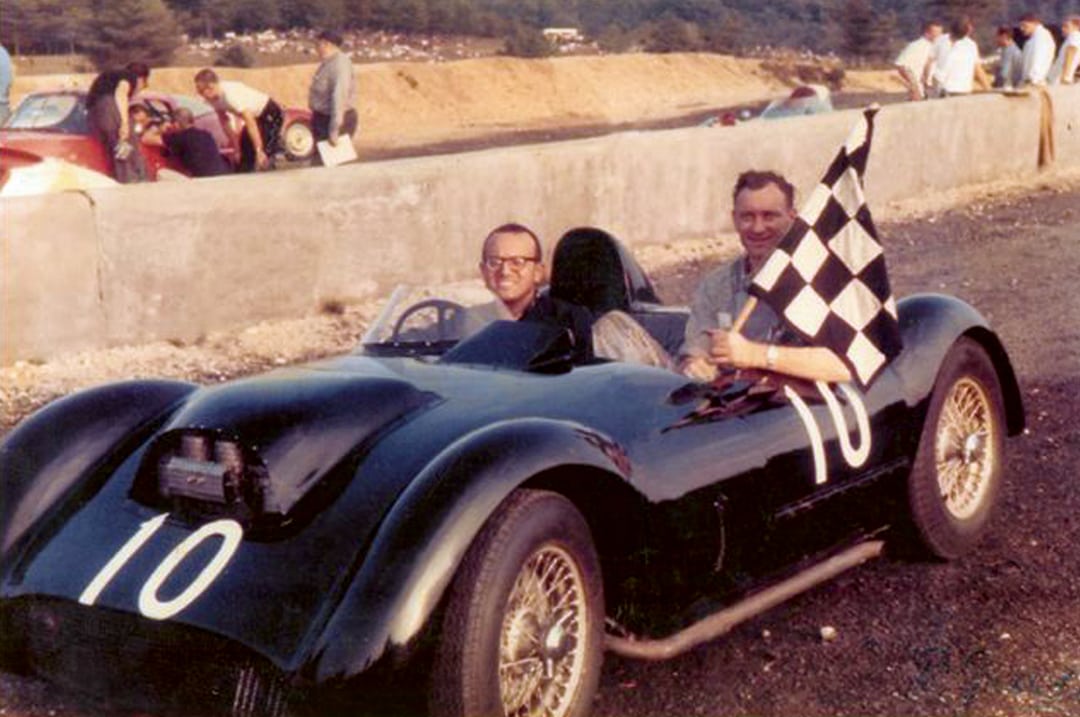
Photo: Ray and Alex Saidel
Saidel was frantically arranging a dealer network to support the new Jomar-badged TVR models. The first of the restyled, left-hand-drive, fastback coupes arrived in time for the 1958 New York Auto Show and hundreds of orders rolled in. Unfortunately, TVR was in financial trouble and could not deliver enough cars. Ultimately, only eight fastback Jomars were shipped before Saidel terminated the agreement.
Back to the Track
There were 23 Jomars built though only 13 are accounted for today. Ray Saidel and son Alex still have two Mk.IIs, one Mk.I, the Formula 2 car, a notchback coupe and a fastback, which are regularly exercised in vintage events when Alex can take time off from running the Merrimack Street Garage. Ray stopped racing the year Alex was born, so his son had missed out on the racing. When Alex was a youngster, he would sneak into the boiler room at the garage where the old cars were stored and stare at them. When he was grown, he and Louis Turner talked Ray into rebuilding them and the Jomars returned to the track in 1991. At 79, Ray was still a strong competitor! “In his first race, they gridded him next to last and in ten laps he passed 15 cars!” says Alex. The two of them maintained a vigorous schedule until a couple of years ago when they scaled back to a few events a year due to family commitments. But their interest in the Jomars remains high. “I would love to find the Daytona car,” Alex confides.
We Drive a Works Jomar
After having its body switched to 7C-S116, the 7C104 was stored by the Saidels until a few years ago when they had a new aluminum body made for it. The fact that they still had its original body to look at helped make sure it was correct. The restored car was sold to Texan Mark Brinker, who collects vintage racing cars. “I didn’t set out to buy a Jomar, but when I was researching a book on American racing cars, I called and talked to Ray and Alex. I realized the Jomars were kind of a mystery and I wanted to know all about them. I ended up buying the restored one. It’s the first Climax-powered car I have raced and it has good power and corners very flat. I loved the lines—it was love at first sight!”
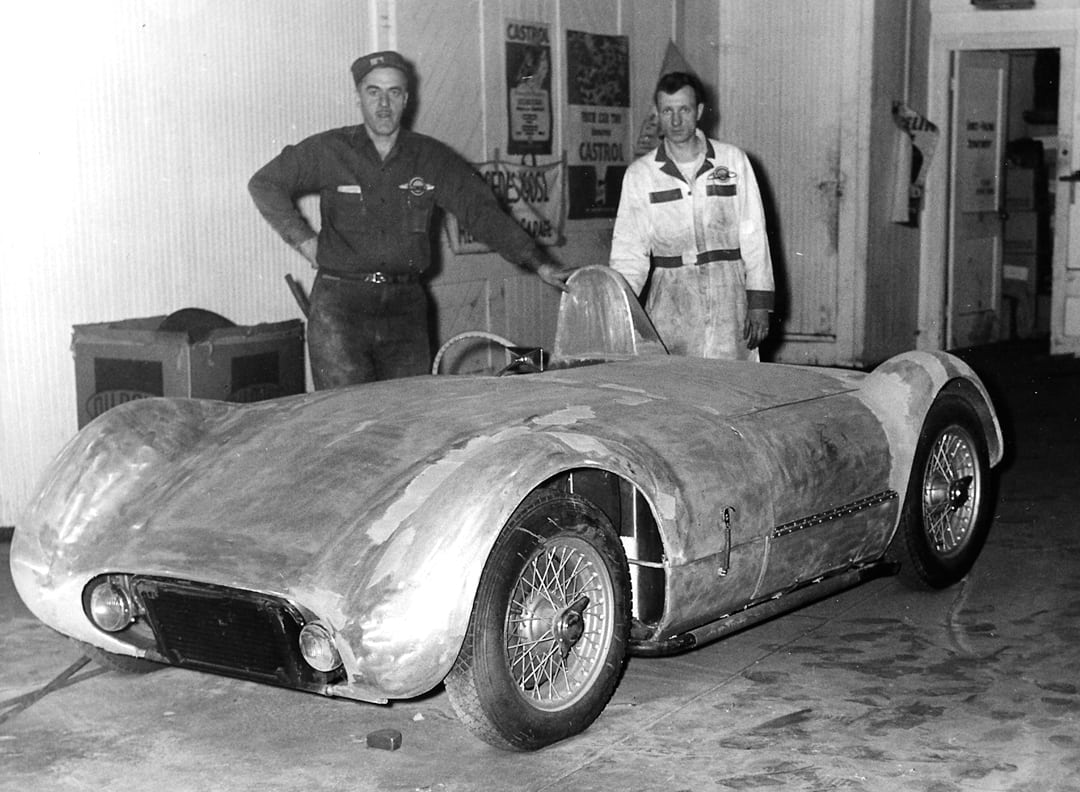
Photo: Ray and Alex Saidel
Brinker recently offered us a chance to drive his Jomar at a CVAR event at Texas World Speedway. The interior has been modified by race-prep expert Greg Lucas to allow taller drivers to fit, which was good since my 6’1” frame would not have made it otherwise. Lucas also installed a roll bar, fuel cell and other safety equipment. The engine is a Stage II Climax that was fitted by Saidel with dual Weber carburetors, and frankly, it’s too much carburetion for the engine (Lucas plans to fit dual SUs or smaller Webers).
The body shape is lovely, reminiscent of a “flatiron” Lister-Jaguar. The nose drops into a low grill opening and there are small bumps over each tire. The engine fires up immediately but must be kept revved up to keep from missing (those big Webers again). Once out on the track for practice, it takes some acclimatization. The shifter is easy to reach but it takes practice to find second gear. Gently easing it into place results in grinding gears—a firm, direct shift works best. The clutch throw is long but easy to modulate. The car pulls well and the power is good, but the excessive carburetion results in a narrow powerband and a flat spot or two under acceleration.
Handling is twitchy, and I was nearly caught out during the first practice when the track was cool and damp. The back wanted to step out at the slightest provocation, and the car was darting under braking. Before the race later that day, Lucas took some toe out of the front and changed tire pressures. In the race, the braking was just fine, the finned drums working as well as most period discs. On a warm track, the handling was much improved and the Jomar felt like it could be made to go rather quickly. It isn’t a “tossable” car that can be pitched and caught, but requires gentle and precise control with the quick steering. The Jomar was a lot of fun and we really appreciate being allowed to try it out.
The Jomar was one of the few American efforts powered by Climax engines. The Anglo-American cooperation resulted in an attractive, successful series of racing cars that are still capable of holding their own on the track with the early Lotus and Elva models of the day.
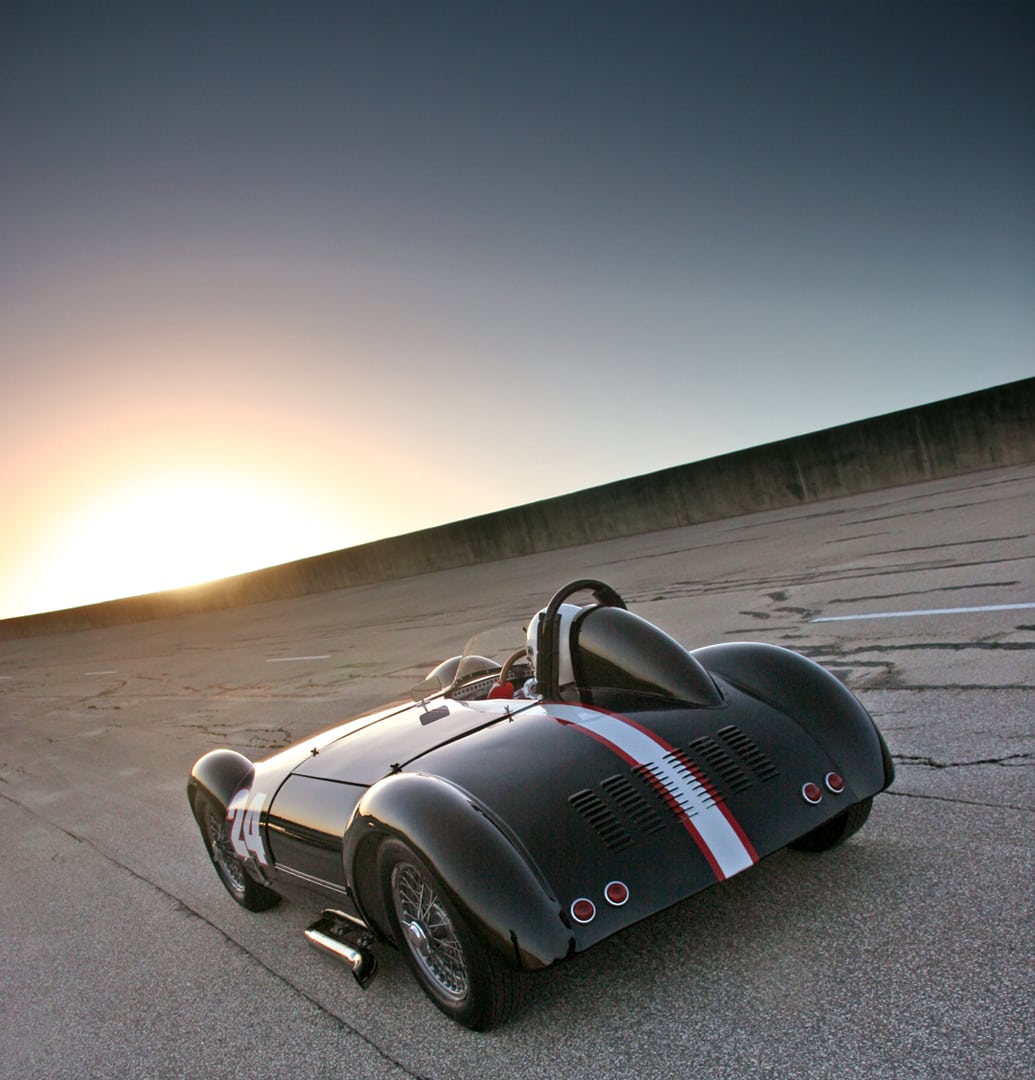
Specifications
Chassis: Two-seat sports-racer with TVR space frame.
Wheelbase: 84”
Track: Front: 50.8”, Rear: 50.8”
Weight: 1,040 lbs dry
Suspension: Front: Independent with VW trailing links and torsion bars. Rear: Independent with VW trailing links and torsion bars.
Steering gear: Worm and nut.
Engine: Coventry Climax FWA Inline-4, 1,100-cc, 2.750” X 2.625”
Power: Stage I – 76 hp @6,200 rpm, Stage II – 84 hp @6,900 rpm, Stage III – 96 hp @7,300 rpm
Fuel system: Stage I and II: Two 1.5” SU, Stage III: Two Weber sidedraft
Clutch: Single dry plate
Gearbox: MG Magnette 4-speed
Brakes: Austin-Healey 11” with Alfin drums
Wheels: 4.5” X 15” Dunlop wire
Tires: Dunlop Racing 500 X 15 front, 550 X 15 rear.
Resources:
Vintage American Road Racing Cars 1950-1970. Harold Pace and Mark Brinker. ISBN 0-7603-1783-6
Automobile Quarterly V35/2. “Jomar, The British Sports Car from New Hampshire”. Jonathan Stein.
Special thanks to Ray and Alex Saidel for their help and enthusiasm.


